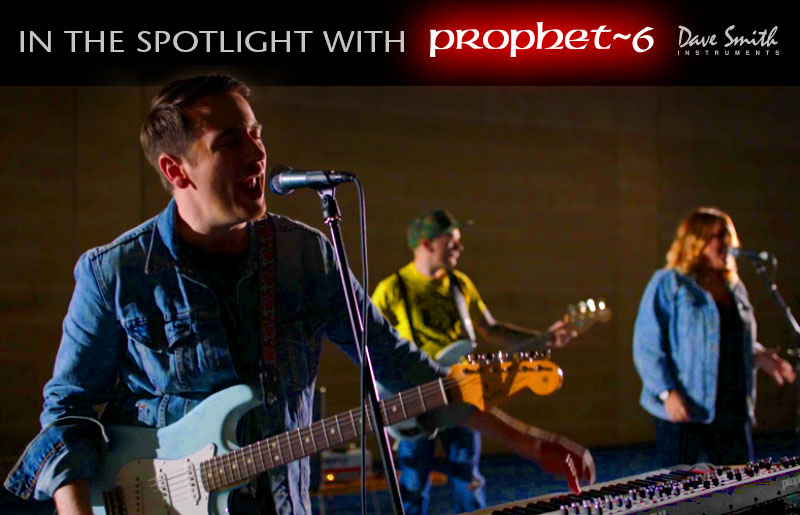
RJ Thompson has built a name for himself in recent months as one of the UK’s strongest up-and-coming singer-songwriters. His poignant lyrics and deeply-felt songs are set against a colourful (and at times nostalgic) soundscape that goes far beyond modern-day singer-songwriter stereotypes.
RJ’s hard-won success has come through consistence and persistence, having played innumerable grass-roots music venues, pubs, and clubs in his native Northeast England. His breakthrough came when a sound engineer for Live Aid organiser and Ultravox frontman Midge Ure was working at one of RJ’s open mic performances. The engineer liked what he heard and recommended RJ as a support act, leading to more than 30 shows touring the UK and Europe. Support shows with Gabrielle Aplin, Deacon Blue and Jools Holland (including a performance at the Royal Albert Hall) soon followed, as well as several EPs and a live album.
We chatted with RJ about how he’s using the Prophet-6.
What made you choose the Prophet-6?
“I took a year off from making music in 2016, and wanted to take a step back to really understand what kind of artist I wanted to be. I think in the past I’ve fallen too easily into a stereotypical singer-songwriter mould, making music that I didn’t really believe in. Part of my time off was spent listening to music that I loved when I was growing up. The bands and artists that made me get into music in the first place. I delved into the gear that they were using, and the Prophet-5 kept cropping up. Things like PYT by Michael Jackson (the main chorus). Radiohead’s Everything In Its Right Place (that lush lead instrument). I went out searching for the perfect instrument to build my whole record around, and fell in love with the Prophet-6.“
How are you using it?
“Primarily, it’s used throughout my record Echo Chamber for texture, but it does take the lead on a few tracks. For example, the title track is the Prophet mixed 50/50 with another synth to give a wide lush, and very 80’s, pad. I used it exclusively for a few solo lines in Blackout Windows. There’s loads of different arps that run through the record too, that are from the Prophet-6. And then there’s bass. It doubles up a lot of bass on the record. It’s the glue that brings the whole album together.“
What’s one of your favorite things about it?
“The layout. I find it very simple and intuitive to use (for someone like myself who isn’t necessarily an expert in the ins and outs of synthesis). There’s loads of depth to it once you dig deep, but it’s very easy to get started crafting your own sounds.”
What does it give you that other instruments don’t?
“That sound! That lush sound that you’ve heard on countless records. I experimented with various soft synths and a few other big-name digital synths, and found nothing that could come close to the Prophet-6 for authenticity.“
Any interesting tricks or techniques you’d like to share?
“Some of the most satisfying sounds I made for the album came with experimenting with the on-board distortion. It lends a really unique texture to the sound that I used a lot.“
LINKS
MORE ABOUT THE PROPHET-6
For more information, check out the Prophet-6 product page here.
Find your local dealer for Prophet-6 pricing here.
If you’re using your DSI gear in interesting ways, tell us about it. Contact us at .
